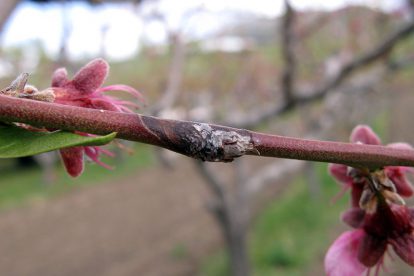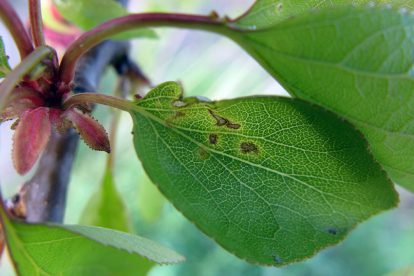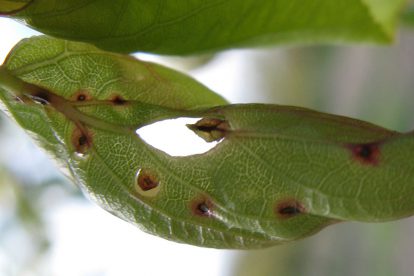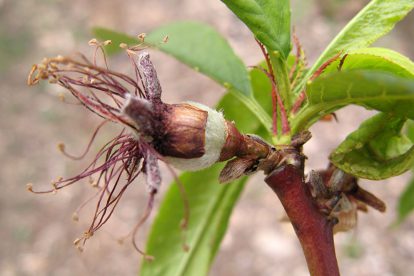Western Flower Thrips on Nectarine
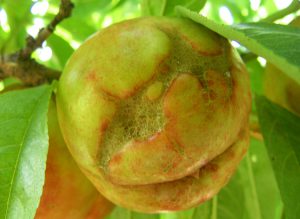
Thrips are tiny insects whose feeding can result in deformed nectarine and plum fruits. Thrips feed on the developing fruit from bloom time to petal fall. As the fruit matures, scars form from the feeding wounds, and oozing gum may be associated with the scars.
To prevent thrips injury, spray spinosad (many brands; organic) at or right after bloom. Treat at night or early in the morning because spinosad is harmful to bees when the product is wet (the dry product does not affect bees). Just one application with thorough coverage is needed.
Coryneum Blight on Peach, Nectarine, Apricot
If coryneum blight is a problem on your trees, one of the most important times to apply a fungicide is at or right after the shuck split stage. Most peach orchards in northern Utah are blooming or approaching bloom, and shuck split stage will follow bloom by about 2 weeks.
This pathogen is spread primarily by rain, and optimal conditions for infection are when temperatures are from 70 to 80°F.
At shuck split, backyard growers can spray chlorothalonil (Daconil; do not use after shuck split), Captan, or Spectracide Immunox. In addition, do not let sprinklers spray water onto leaves or branches.

